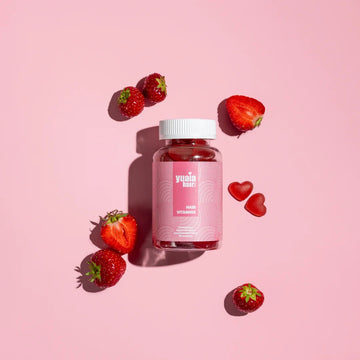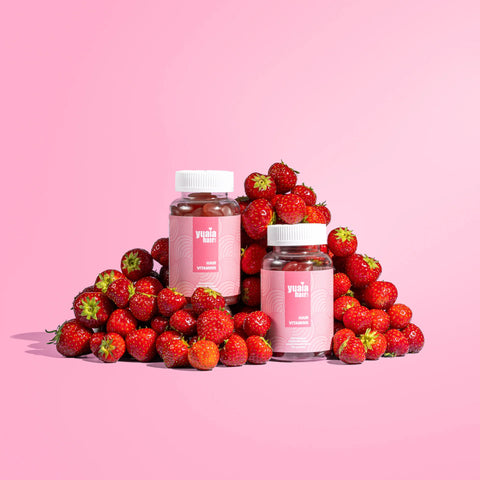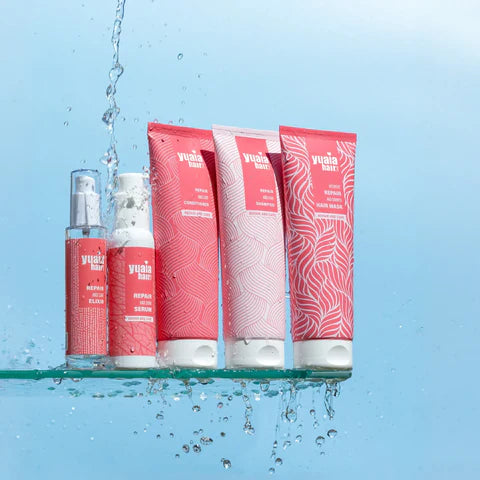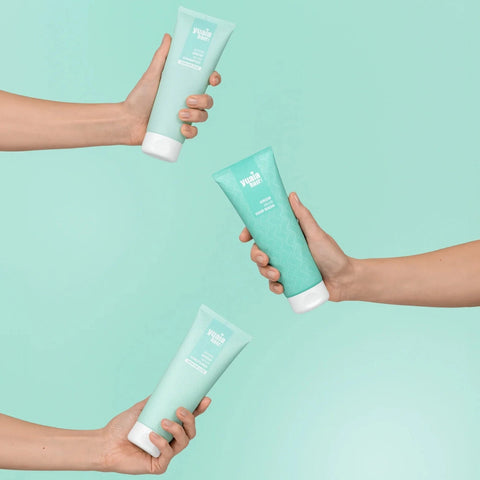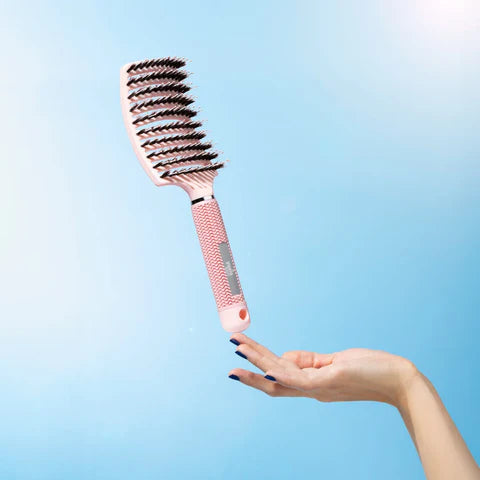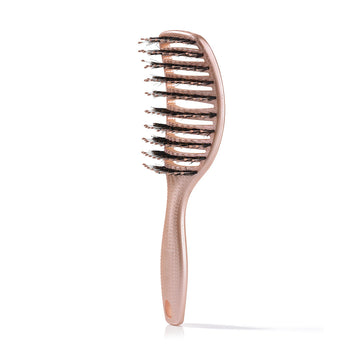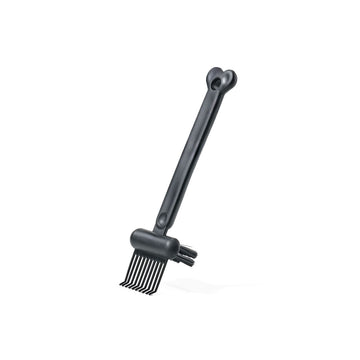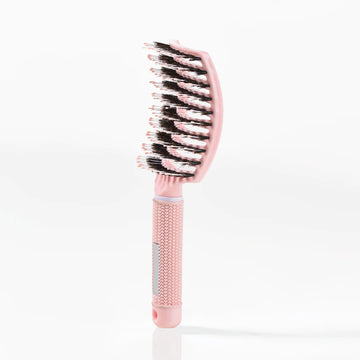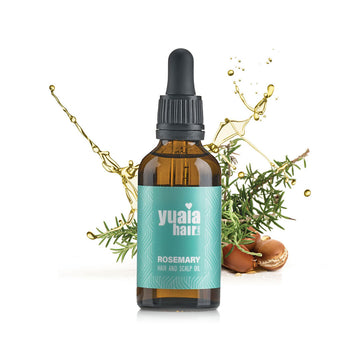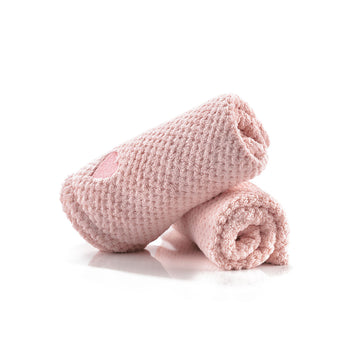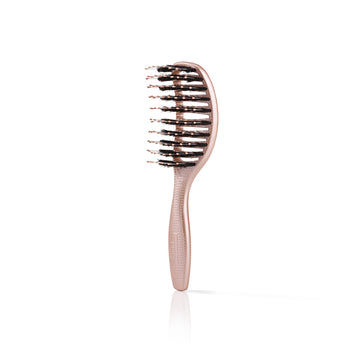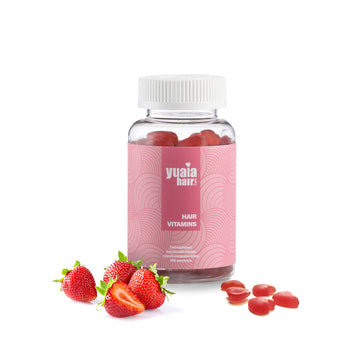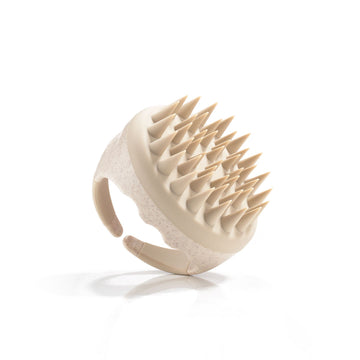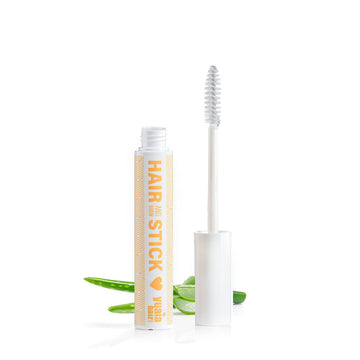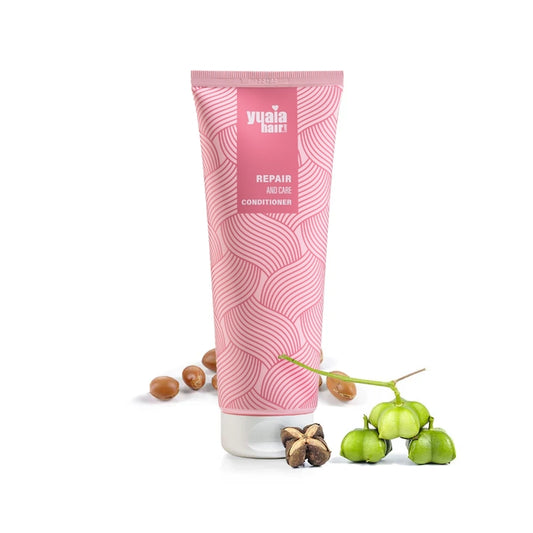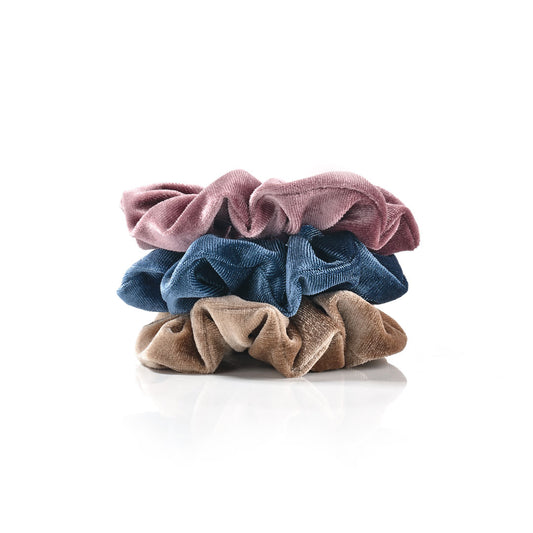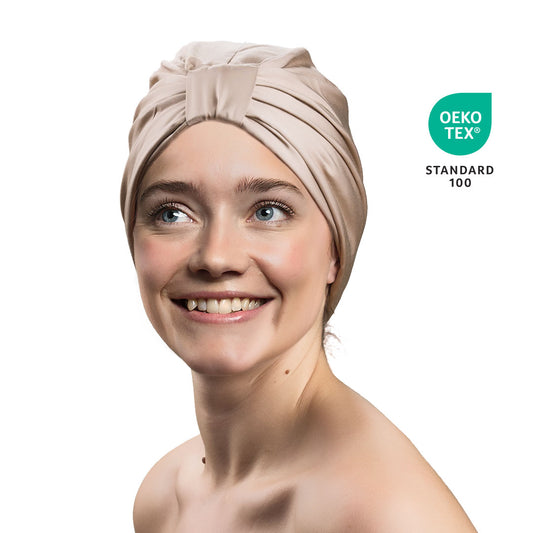
What does damaged curly hair look like?
The first step toward healing is recognizing what damaged curly hair looks like. If your curls appear limp, frizzy, or undefined, it may be a sign of distress. Split ends, a dry or straw-like texture, and excessive shedding are also strong indicators. Another key symptom is a lack of elasticity: Healthy curls should stretch and spring back, while damaged curls may break or remain stretched. Changes in porosity—how well your hair absorbs and retains moisture—can also point to damage, often resulting in hair that feels overly dry or gets wet instantly without holding hydration.
Heat damaged curly hair
One of the most common culprits behind damaged curls is heat styling. Tools such as flat irons, curling wands, and blow dryers can denature the hair’s protein structure. This often results in looser, inconsistent curl patterns or hair that appears straight in sections but feels brittle. Heat damaged curly hair typically loses its natural curl memory, making it difficult to revert to its original shape even after washing. These changes can become permanent if not addressed quickly.
How to fix damaged curly hair
Addressing damaged curly hair effectively involves a series of focused strategies that work together to support recovery.
In the following sections, we'll explore proven methods that target moisture restoration, strengthen weakened strands, and protect curls during the healing process.
Deep conditioning for moisture recovery
Recovering from damage requires more than just avoiding harmful practices—it also means actively restoring the hair’s moisture and elasticity. Deep conditioning treatments are an important part of this recovery process, especially for curly hair, which tends to be naturally drier and more porous. These treatments work by penetrating the hair shaft to deliver hydration and nutrients that support curl strength and resilience.
Look for deep conditioners formulated with ingredients such as shea butter, aloe vera, jojoba oil, ceramides, or panthenol. These components help smooth the cuticle, reduce frizz, and restore softness and definition to curls.
For the best results, apply a deep conditioning treatment once a week. After distributing it evenly through clean, damp hair, cover the hair with a heat cap or wrap it in a warm towel for 15–30 minutes to enhance absorption. Regular use not only improves the hair’s texture and manageability but also supports long-term curl health.
Protein treatments for strengthening
Protein treatments can also help rebuild hair strength and improve texture, especially for hair that has been weakened by heat. Choose formulas that contain hydrolyzed proteins, as these can penetrate the hair shaft more effectively and repair structural weaknesses from the inside out. These treatments work by temporarily filling in gaps along the hair cuticle, which enhances smoothness and curl retention.
It's a good idea to observe how your hair responds after each treatment—some curls may benefit from a moisture follow-up to balance the effects. For those with low-porosity hair, applying a warm towel or using a hooded dryer during the treatment can help open the cuticle and maximize absorption. However, use protein treatments sparingly—no more than once every 4 to 6 weeks—since overuse can cause the hair to become brittle and dry. Alternating between protein and moisturizing treatments is often the best approach to maintaining both strength and softness in your curls.
Protective styling for damage prevention
Opt for protective hairstyles that reduce both tension and friction, such as loose braids, buns, or twists. These styles help shield the ends of the hair—often the oldest and most vulnerable parts—from breakage. Additionally, protective styles limit daily manipulation, which otherwise contributes to wear and stress on fragile strands.
Alternate styles for scalp health
To prevent over-stressing specific areas of the scalp—especially along the edges and nape—consider rotating hairstyles weekly. Switching between updos, loose twists, and other low-manipulation options like halo braids promotes balanced protection and allows your scalp to recover. Avoid overly tight styles, as these can lead to long-term issues like traction alopecia.
Use gentle accessories
Incorporate accessories that minimize snagging and tearing. Velour scrunchies, seamless clips, and soft headbands provide styling versatility without compromising hair health. For added protection, wrapping your hair in a silk or satin scarf during the day helps guard against environmental stressors and weather exposure.
Protect hair while sleeping
Wearing a bamboo bonnet or sleeping on a bamboo pillowcase reduces nighttime friction and extends the longevity of protective styles. Unlike cotton pillowcases, which absorb moisture and cause frizz, bamboo helps preserve hydration and definition. These practices support healthier curls and reduce the impact of daily wear and tear.
How to repair damaged curly hair naturally
For those who prefer a holistic or chemical-free approach to hair care, natural remedies can offer powerful results without the use of synthetic ingredients. These methods not only restore hydration and vitality to damaged curls but also support overall scalp health, which is essential for long-term improvement. Below are some of the most effective natural solutions for revitalizing your curls.
Oil treatments for moisture and shine
Natural remedies can be a gentle yet effective way to revive damaged curls. Oils like argan, jojoba, and coconut are nutrient-rich and help seal in moisture. Used as pre-shampoo treatments or leave-ins, they smooth the cuticle, add shine, and reduce breakage.
These oils can also improve detangling and work well after moisturizing to lock in hydration. Their versatility makes them suitable for different curl types: Lighter oils like jojoba oil for finer hair and coconut oil for thicker textures.
With regular use, natural oils can enhance curl softness, manageability, and overall strength, supporting long-term recovery and resilience.
Application tips for maximum effect
To get the most out of your hair oil treatment, consider the following application methods for enhanced absorption and long-lasting moisture benefits:
-
Warm the oil slightly before use to improve its consistency and help nutrients penetrate more deeply into the hair shaft.
-
Apply to damp or dry hair, focusing on the mid-lengths to ends—areas that are often drier, more porous, and prone to breakage or frizz.
-
Use your fingertips or a wide-toothed comb to distribute the oil evenly, gently massaging it through the hair and onto the scalp to encourage blood circulation and support growth.
-
Enhance absorption by wrapping a warm towel around the hair, creating a gentle heat that helps the oil work more effectively while you rest.
Enhancing oils with essential additions
You can also experiment with oil blends. For instance, combining a carrier oil like jojoba with a few drops of essential oils such as tea tree, lavender, or peppermint not only enhances fragrance but also provides antifungal, soothing, and stimulating benefits to the scalp. This can be particularly beneficial if dryness or irritation at the scalp is contributing to overall hair health issues. Using these oil treatments in your regular routine can gradually restore curl integrity, leading to improved softness, manageability, and bounce.
DIY hair masks for deep nourishment
DIY hair masks can give your curls the nourishment they need without synthetic additives.
Ingredients for curl repair
Curly hair thrives on moisture, strength, and elasticity—qualities that can be restored with the right blend of botanical and protein-rich ingredients. At Yuaia Haircare, we incorporate a variety of non-edible, plant-based components into our hair masks to support the health and resilience of curls.
-
Inca inchi oil: Derived from the seeds of the Sacha Inchi plant, this oil is rich in omega-3 fatty acids. It deeply conditions the hair, enhancing moisture retention and reducing frizz, making curls more manageable.
-
Mango butter: Known for its high content of fatty acids, mango butter helps rebuild hair structure and increase elasticity, which is essential for maintaining defined curls.
-
Hydrolyzed wheat protein: This protein penetrates the hair shaft to strengthen and repair from within, reducing breakage and improving the overall texture of curly hair.
-
Hyaluronic Acid: This powerful humectant attracts and retains moisture in the hair, enhancing softness and elasticity, which are important for bouncy, well-defined curls.
Incorporating these ingredients into your hair care routine can significantly improve the health and appearance of curly hair, restoring its natural vitality and definition.
Boosting the effect with essential oils
You can also mix in a few drops of essential oils such as rosemary or lavender to stimulate the scalp and enhance the mask's benefits. Rosemary oil is known for its potential to improve circulation and promote hair growth, while lavender oil can soothe the scalp and reduce inflammation. Combining these essential oils with nutrient-dense ingredients creates a synergistic effect that supports both scalp health and strand vitality.
How to apply your DIY hair mask
Apply the mask generously from roots to ends, making sure every curl is coated. For best results, cover your hair with a shower cap or wrap it in a warm towel to help the ingredients penetrate more deeply. Let it sit for at least 30 minutes—or up to an hour if your hair is severely dry or damaged—before rinsing thoroughly with lukewarm water.
Routine and maintenance tips
Repeat this treatment weekly to maintain softness, definition, and overall curl health. Consistency is key, and over time, these natural treatments can significantly improve the condition and appearance of your curls.
Aloe vera for scalp and hair health
Aloe vera gel is particularly beneficial for soothing the scalp and rehydrating dry strands. It has anti-inflammatory properties that help calm irritation while providing lightweight moisture that doesn't weigh curls down.
Aloe can be used directly on the scalp or mixed into leave-in conditioners for added hydration. When used consistently, these natural options can gradually improve the look and feel of damaged curly hair and support long-term scalp and strand health.
Preventative measures for healthy curls
-
Limit heat styling: Reduce the use of heat styling tools, as frequent high temperatures can degrade the hair’s protein structure over time. When heat is necessary, always apply a heat protectant to act as a barrier and minimize potential damage.
-
Adopt a gentle cleansing and hydration routine: Use sulfate-free shampoos to avoid stripping natural oils, and pair them with silicone-free conditioners to retain moisture without causing buildup. Incorporate regular deep treatments—such as intensive masks or leave-in conditioners—to replenish hydration and reinforce curl structure.
-
Trim regularly: Schedule trims every 8–10 weeks to prevent split ends from moving up the hair shaft. Even while growing your hair, light dusting can maintain the shape and prevent cumulative breakage.
-
Prioritize nighttime protection: Use bamboo pillowcases or silk scarves during sleep to reduce overnight friction that leads to frizz, tangles, and breakage. Loosely braiding or twisting your hair before bed can also minimize tension and help curls stay defined.
-
Be consistent and patient: Sustainable curl care is built on regular, intentional habits. Over time, this approach promotes smoother strands, stronger definition, and lasting curl health.
Bringing your curls back to life: A path to lasting hair health
Damaged curly hair doesn't have to be permanent. By recognizing the early signs, understanding the impact of heat and other stressors, and implementing restorative and preventative care strategies, you can revive your natural curl pattern. Whether you opt for natural treatments, product-based routines, or a mix of both, the path to healthy curls starts with informed and consistent care. Your curls can bounce back—and with the right attention, they'll be stronger and more beautiful than ever.
Frequently Asked Questions
How can I tell if my curly hair is damaged?
Signs of damaged curly hair include limp or undefined curls, excessive frizz, split ends, dryness, a straw-like texture, increased shedding, and a lack of elasticity. If your curls do not spring back after being stretched or feel rough and brittle, they may be damaged.
What is the best way to restore moisture to damaged curly hair?
Deep conditioning treatments are highly effective for restoring moisture to damaged curly hair. Look for products with hydrating ingredients like shea butter, aloe vera, and jojoba oil. Apply a deep conditioner weekly, and use a heat cap or warm towel to help the product penetrate the hair shaft.
Can I repair heat-damaged curls, or is the damage permanent?
Some heat damage can be improved with regular moisturizing, protein treatments, and gentle care. However, if the curl pattern is permanently altered or the hair is severely weakened, trimming the damaged sections may be necessary for full recovery.
Are natural oils effective for repairing damaged curly hair?
Yes, natural oils like argan, jojoba, and coconut oil can help seal in moisture, add shine, and reduce breakage. They are especially beneficial as pre-shampoo treatments or leave-ins for dry, damaged curls.
How can I prevent future damage to my curly hair?
To prevent future damage, limit heat styling, use sulfate-free and silicone-free products, trim regularly, protect your hair at night with silk or bamboo pillowcases, and maintain a consistent, gentle hair care routine.
 2-4 day UK delivery
2-4 day UK delivery
 25.000+ satisfied customers
25.000+ satisfied customers
 Satisfaction Guarantee
Satisfaction Guarantee

